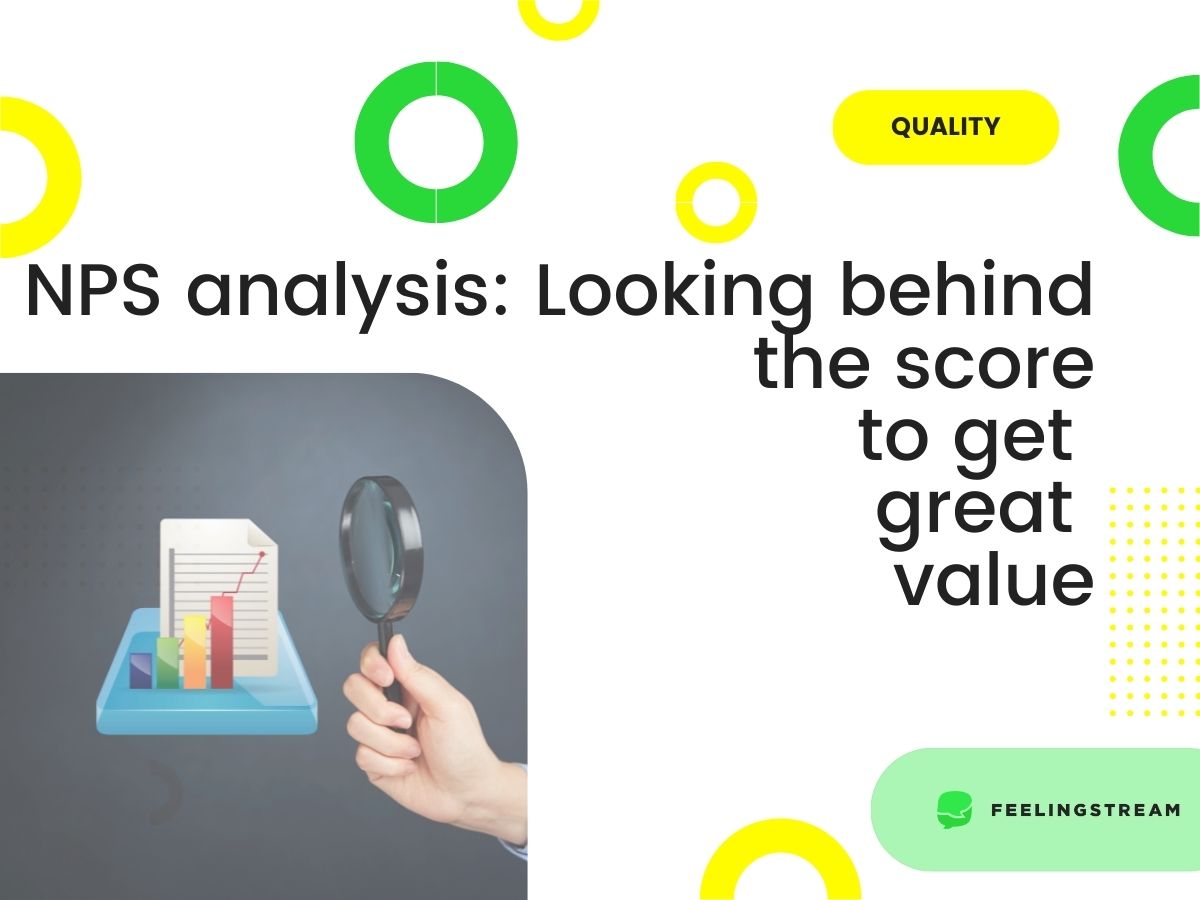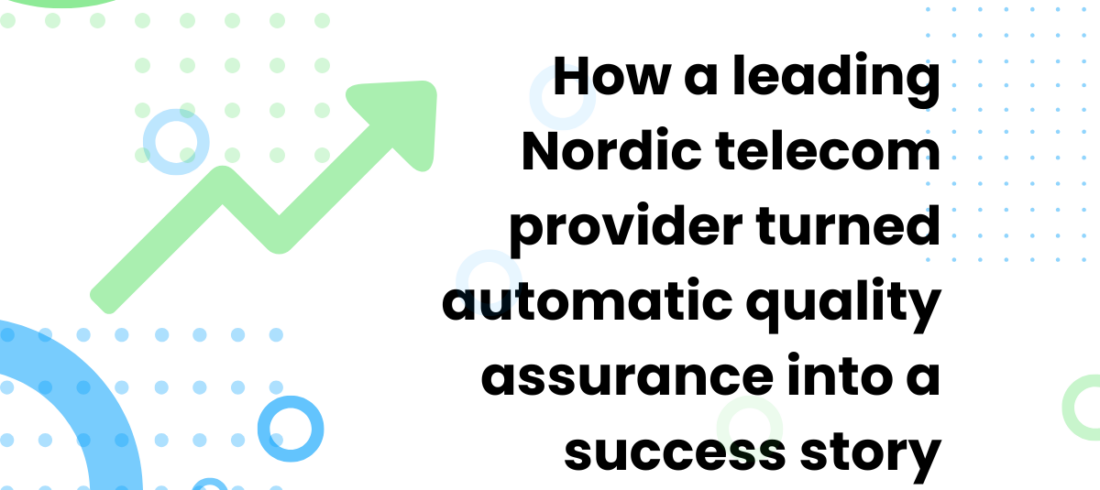It is generally known that if a person has the freedom to choose and there are several services available on the market with different levels, they will spend their money where they get the best service.
Here and there we see different service providers advertising themselves, using the “our customers recommend us” slogan! Our NPS is 80%! What do their customers actually think when they choose 10 points in the NPS (Net Promoter Score) scale? I personally only give maximum points for the service that I was truly happy with and where I felt that my expectations were met and exceeded. NPS analysis can help see what’s behind the scores.
Experience in advising on the design of the service in both Estonia and Finland shows that sometimes the customer’s chosen NPS score and the comment explaining it do not match or the same number of two customers get a completely different meaning when reading the added comment.
NPS analysis can give context to the scoring
For example, someone gives the score 8 (neutral on the scale). They write in the comment box that the service was very good and met expectations. At the same time, another customer chooses the same score – 8. They write that they could not give the maximum score, because they had to wait in line for too long. These experiences are not the same – therefore, just looking at the numbers doesn’t give a true picture of customer experiences. It is important to analyse the sentiment in the comment and the topics that are talked about. NPS analysis like this is the only way that the company can set targets to create a customer-centered service. This is important for an environment that supports long-term customer relationships.
Estonians are humble even when talking about a good experience
We at Feelingstream cooperate with large corporations for example in the banking and telecom sectors. We have analysed more than 2 million customer comments in Estonia and Finland. For these corporations, the customer feedback is a very important metric in understanding and assessing the success of their activities.
When we put the NPS score calculated based on the scoring and the comments side by side, we see that people do not have the same perception of the numbers. Differences also come up based on the field that the company is in. Comparing the comments regarding the NPS scoring in the same sector for Estonians and Finnish people, we also see differences. Estonians express their positive emotions mildly, with denial or rather through a negative situation. On the other hand, Finns write much more positively about their good experiences.
Finns also give more neutral scores in comparison with Estonians, but their comments for these scores are rather positive. Additionally we see similarities that would go unnoticed if we’d just use NPS analysis for the scores, and not the comments. A similarity in the comments is that Estonians and Finns like to bring attention to appreciating loyal customers and long-term customer relationships.
Some examples of differences in answers from Estonians and Finns
NPS question: How likely are you to recommend us to a colleague or friend?
Estonians: There is no reason not to recommend; Why should I not recommend, everything worked out; Why not recommend to people I know; I will not recommend myself, but will recommend if someone asks me; I cannot find a reason why I should not recommend; I have not had any negative experiences, so I’d recommend; I have not had any negative experiences thus far, so I will recommend.
Finns: Great service; I will recommend as the service works; I have been happy with the service; The service is up to my needs and I am happy; I like your company’s services; I feel welcome as a customer and I am very happy with that; This service always works as I have been promised and therefore I am happy.
Here I’d like to point out that it is good for the customer that they pass on recommendations, say good things about good service and talk about their “wow” experiences in public. There are service providers out there who will appreciate it. They can surprise the person giving the feedback in a positive manner. For example like Spotify has done by creating special lists of recommended tracks for their customers based on their likes.
Basing NPS analysis only on the scoring does not give a true picture
Sector-based and cultural differences in the answers of the recommendation question only come up if you systematically analyse the textual comments that the customers have made. Just looking at the numbers gives a skewed picture. This is how we’ve been able to find feedback for service improvements for customer service several times in our analysis.
Example from Finland. One of the company has customer service agents who have similar qualifications, but the questions from the customers have a wide variety of content. Almost half (47%) of the incoming emails are tied to very easy tasks and these get divided equally amongst all of the agents. At the same time, the agents have gone through a lot of sales training, their goals are tied to sales performance and they oftentimes have their own “customer portfolios” to manage. The current uniform and equalised division of incoming emails between the agents is not beneficial. This is because it does not take the contents into consideration. Instead, the automatic analysis of the contents can give information in regards to the topic that the customer is writing about. Next step is to forward the email to the agent who has the best skills for the job.
Customer relationships are important for great experiences
The key to a memorable customer service is in creating a relationship between the company and the customer, making the customer feel like that using the service is easy and comfortable. A customer who has had a great experience comes back to the service and will recommend the company’s services to their friends as well. Including the information from the customer comments into the process of improving the customer experiences – analysing customer emails and feedback comments systematically and automatically – the enterprise can easily and flexibly move towards a better customer relationship.
Feelingstream is a startup that got it’s start with participating in Telia VUNK program and an accelerator with Nordea. Feelingstream helps companies design a better service for their customers.




